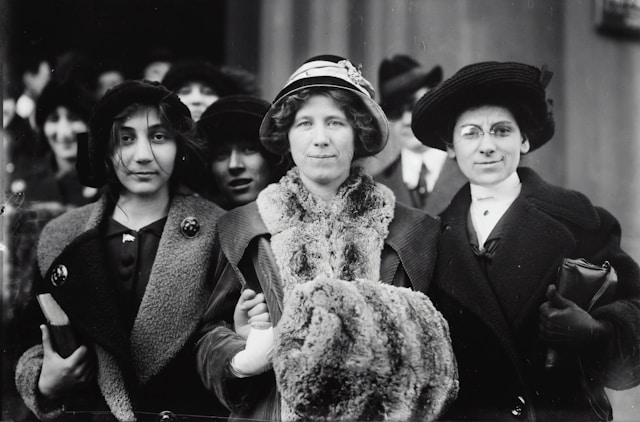The significance of Ottessa Moshfegh and Claire-Louise Bennett’s writing of feminine identity
Over the centuries, women’s true selves have been trivialised and suppressed. Only when female bodies fulfil the male gaze of film and literature, can it be discussed or presented to us, which is evident in the danger of the New Woman within the late 19th century, where Stoker’s overtly sexual vampire brides are voraciously evil. Or within didactic novels, this is also true, where the heroine in Rousseau’s Emile must be an ‘Angel in the house’: a quiet wife and mother, in order to survive. Female readers have been taught by the literary canon that to express their womanhood separate from men, is to be deviant.
This is why contemporary stories written by women, following introspective heroines, who are admittedly flawed, are so important.
We need a raw depiction of the woman, shattering the rose-tinted glass of the male gaze and repositioning femininity as existent in its own right
We need a raw depiction of the woman, shattering the rose-tinted glass of the male gaze and repositioning femininity as existing in its own right. Two authors that I believe accurately pursue this detachment are Ottessa Moshfegh and Claire-Louise Bennett.
Beginning with Moshfegh, I’m sure you have heard of My Year of Rest and Relaxation. And like me, you may have devoured in one sitting the story of her unnamed female narrator’s misanthropic, year-long sleep to escape reality. This undeniably popular text does not even touch the tip of what Moshfegh is capable of. She subverts the preferred amiable heroine who follows a didactic trajectory of remaining quiet and flourishing into the angel in the house. Moshfegh’s heroines are flawed and unlikable, sometimes obsessive, and bask in the disgusting capabilities of their bodies.
Within Eileen, the eponymous character fantasises within explicit monologues of her unrequited lust for a prison guard, detailing the base lengths she would go to for satisfaction with him. She expresses disillusionment with her circumstances living with an antagonistic father and working an office job. Moshfegh topples the female protagonist trope in the literary canon. She writes of a neurotic heroine, one that will never fulfil the role of the perfect wife, but also won’t be boxed in as the dangerous sexual creature or ruined woman of scandal. Mental illness of women additionally is not fetishized by Moshfegh’s prose, rather, it is scathingly shameless. No moral lessons are taught because her female characters do not need to be malleable for societal values.
In Checkout 19, Claire-Louise Bennett explores her protagonist’s experience with menstruation. She confronts the societal shame that coincides with the “human” function of menstruation. What is so interesting about her recalling of this memory is the female solidarity she experiences with another girl who subtly gives her a “pair of her knickers” and a pad, without hesitation. Bennet’s writing considers the feminine expectation to remain subdued as she scolds herself, “How many years have you been having periods, and still you manage to get blood everywhere?” Yet the girl in the classroom doesn’t question or react with revulsion; by immediate instinct, she offers the narrator her belongings in aid. Bennett questions the innate shame that many women experience with menstruation and the public knowledge of their periods. She critiques societal presentation of periods as girls are meant to go about their ordinary days, depicted in adverts as “riding white horses across tremendous golden beaches and so on.” Girls are told not to “bellyache and groan” in pain, as this diverges from the ‘quiet’ trope of women.
Bennett’s text exposes the realities of her narrator’s womanhood
Bennett’s text exposes the realities of her narrator’s womanhood. It’s a refreshing prosaic exploration of how a woman experiences something natural to her, rather than repressing her body’s capabilities. I found this chapter poignant as Bennett’s protagonist recognises her distorted shame of her period, considering how this was hardwired into her mind through cultural depictions of femininity, particularly in tampon advertisements. She reassures us that some aspects of womanhood can be uncomfortable, but it doesn’t need to be shrouded. It should be discussed openly.
Both My Year of Rest and Relaxation and Checkout 19 have received serious traction in the book sphere in the past decade, becoming texts that women can see themselves in. It’s important that these texts are in first-person, revolving around unnamed protagonists, both struggling with mental illness and trauma. Experiences that many young women today face and yet cannot express in words. The anonymity of these heroines enable the reader to map themself onto their resonant lives, being able to articulate their emotions as women, and many men can use these character-driven texts to understand the struggles of modern-day women. If you’ve read either of these texts and loved them, I would recommend reading Eileen and Death in Her Hands by Moshfegh, as she confronts female sexuality and the process of ageing and mental deterioration. I also suggest Pond by Bennett, a profound set of short stories following streams of thought that focus on “the mind in solitude”, as Phillip Maughn accurately defines it (“The Mind in Solitude: an interview with Claire-Louise Bennett.” The Paris Review, July 18, 2016 edition).

Comments